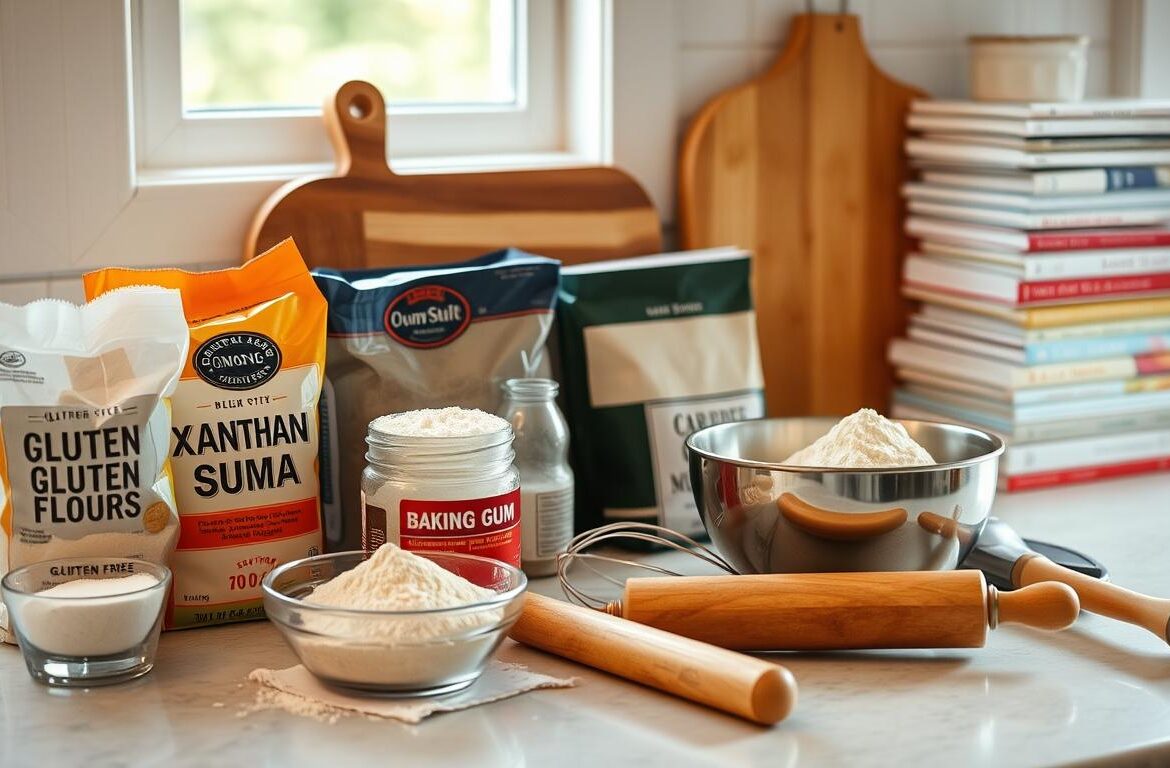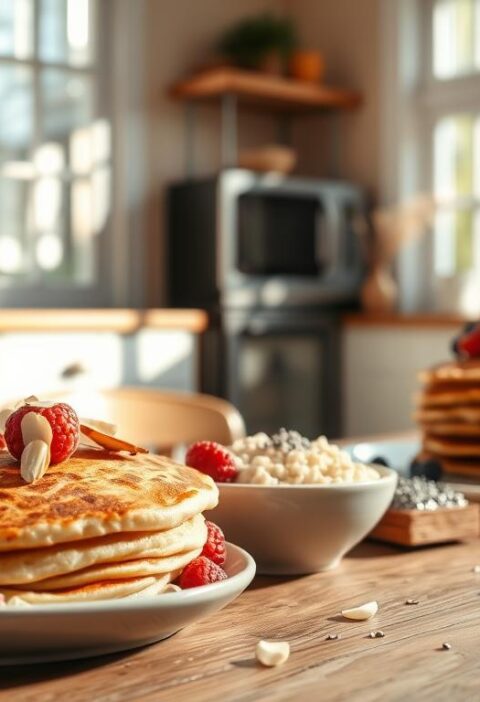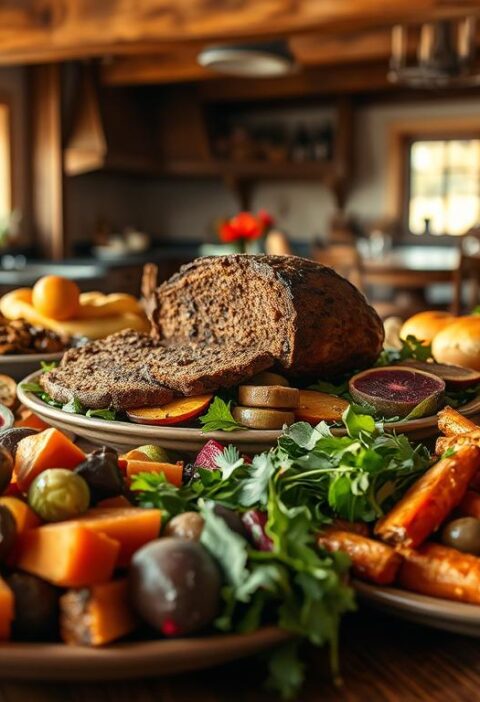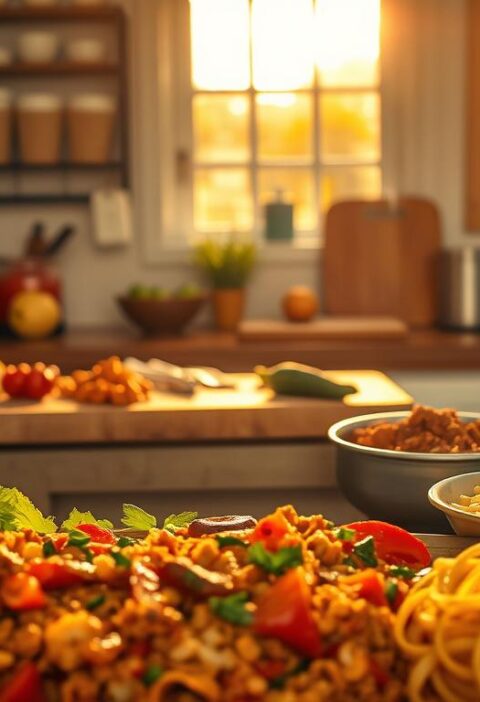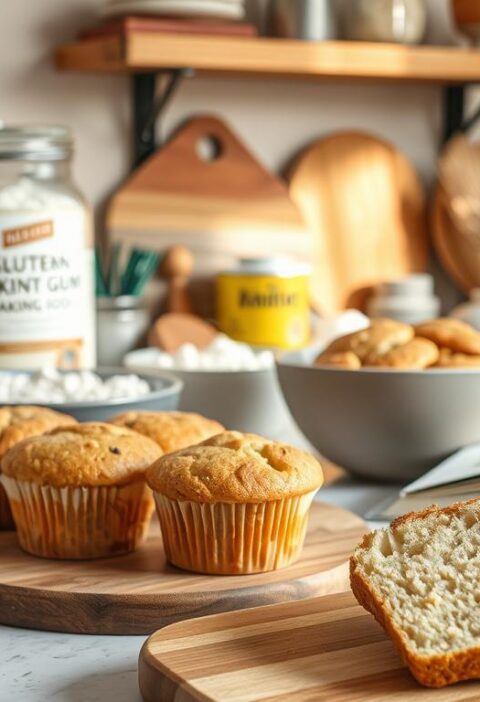Imagine enjoying your favorite treats without worrying about gluten. Gluten-free baking is a game-changer for many. It lets them enjoy delicious baked goods without gluten’s negative effects.
If you’re new to gluten-free baking, you’re not alone. Many turn to it because of gluten intolerance or celiac disease. With help from trusted sources like Taste of Home, you can learn easy baking techniques to start.
Knowing the basics of gluten-free baking is key to success. It’s not just about swapping gluten for other ingredients. It’s about making a product that’s as tasty and satisfying as the gluten version.
Key Takeaways
- Understand the importance of gluten-free baking for those with gluten intolerance or celiac disease.
- Learn the basics of gluten-free baking, including ingredient substitutions.
- Discover easy baking techniques for beginners.
- Explore resources for gluten-free baking, including recipes and guides.
- Create delicious gluten-free baked goods that everyone can enjoy.
Understanding Gluten and Why It Matters
Before we start on gluten-free baking, let’s understand gluten. It’s a protein in wheat, barley, and rye. Knowing about it is key for those who must avoid gluten.
What Is Gluten and Who Needs to Avoid It
Gluten makes dough stretchy and strong. People with celiac disease or gluten intolerance must stay away from it. Eating gluten can harm their small intestine and cause health problems.
How Gluten Functions in Traditional Baking
In regular baking, gluten makes dough chewy and helps it rise. It traps air, making bread light and fluffy. Knowing how gluten works is important for gluten-free baking.
The Challenges of Gluten-Free Baking
Gluten-free baking is tough because these flours don’t have gluten’s strength. Bakers mix different flours and additives to get the right feel. With the right techniques, you can make tasty gluten-free treats that are celiac safe and fun for all.
Essential Gluten Free Baking Basics
Starting your gluten-free baking journey is exciting. It begins with setting up your kitchen right. You need to make sure your baked goods are tasty and safe for those with gluten issues.
Setting Up Your Gluten-Free Kitchen
Having a gluten-free kitchen area is key. You don’t need a whole new kitchen. Just make sure you have a special spot for gluten-free baking. This helps avoid mixing gluten with gluten-free foods.
Cross-Contamination Prevention for Celiac Safe Baking
Stopping cross-contamination is very important. It’s not just about using gluten-free ingredients. You also need to make sure your tools and space are clean of gluten.
Dedicated Equipment and Storage Solutions
Use only gluten-free baking tools. This means separate bowls, utensils, and pans. Labeling them helps avoid mistakes. Store gluten-free items in airtight containers to keep them fresh and safe.
Ingredient Verification and Certification Labels
Always check if your ingredients are gluten-free. Look for labels from groups like the Gluten-Free Certification Organization (GFCO) or the Celiac Support Association (CSA). These labels mean the products are safe for gluten-free diets.
Must-Have Tools and Equipment
To start gluten-free baking, you need some basic tools. Here’s what you’ll need:
| Tool/Equipment | Purpose | Benefit |
|---|---|---|
| Dedicated Mixing Bowls | For mixing and preparing dough | Prevents cross-contamination |
| Gluten-Free Measuring Cups | For accurate measurement of ingredients | Ensures recipe accuracy |
| Airtight Containers | For storing gluten-free ingredients | Keeps ingredients fresh and protected |
With the right kitchen setup and knowledge of cross-contamination, you’re ready to bake. You’ll make wheat free desserts that everyone can enjoy. Learning Gluten Free Baking Basics is the first step to becoming a great gluten-free baker.
Guide to Gluten-Free Flours and Ingredients
Starting gluten-free baking means learning about different flours and ingredients. It’s not just about swapping wheat flour for another. You need to pick the right mix for the right taste and texture.
Common Gluten-Free Flour Types and Their Properties
Gluten-free flours fall into several categories, each with its own uses.
Grain-Based Alternatives
Flours like rice, corn, and sorghum are favorites. Rice flour is soft and great for tender treats. It’s also good for those with allergies because it’s easy to digest.
Nut and Seed Flours
Nut and seed flours, like almond flour and flaxseed meal, boost nutrition and taste. Almond flour is packed with protein and healthy fats. It’s perfect for desserts, adding moisture and a nutty taste.
Starch Options
Starches like tapioca and potato help gluten-free treats feel lighter. They make the texture better when mixed with other flours.
| Flour Type | Properties | Best Used For |
|---|---|---|
| Rice Flour | Light, delicate, hypoallergenic | Tender baked goods, cakes |
| Almond Flour | Rich in protein, healthy fats, nutty flavor | Desserts, moist baked goods |
| Tapioca Starch | Neutral flavor, improves texture | Lightening texture in baked goods |
Creating Effective Flour Blends
Mixing different gluten-free flours often works better than one type alone. A good mix can feel like traditional flour. Try different amounts to find your favorite.
Essential Binding Agents and Additives
Xanthan Gum and Alternatives
Xanthan gum helps gluten-free treats feel right. It keeps things together. If you don’t like xanthan gum, guar gum works too.
Protein Additions for Structure
Adding protein, like eggs or protein powders, makes gluten-free treats stronger. It helps them hold together like gluten does in regular baking.
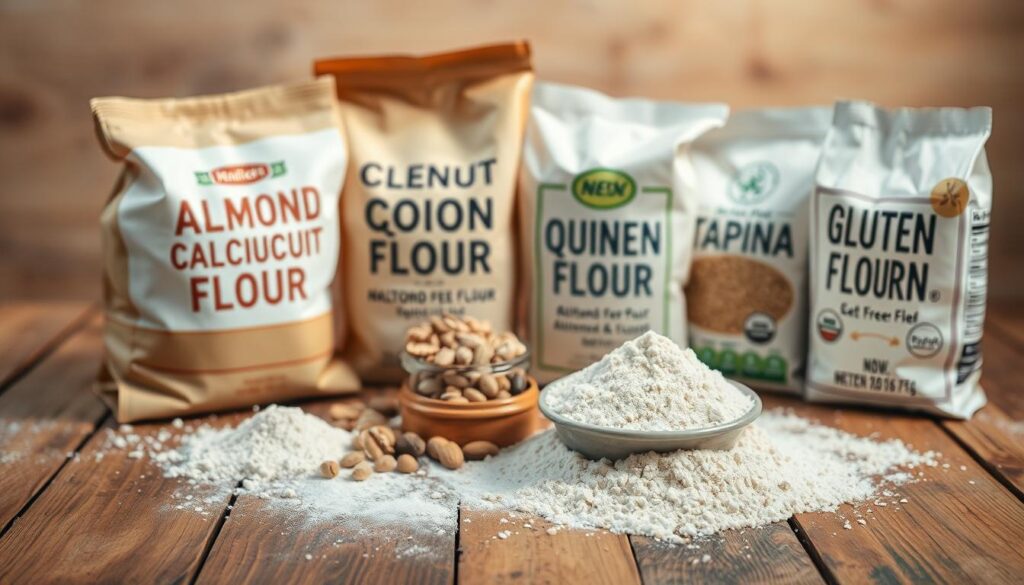
Beginner-Friendly Gluten-Free Recipes
Start your gluten-free baking journey with our easy recipes. They are perfect for beginners. These recipes will help you learn with simple steps.
Simple Wheat Free Desserts to Start With
Begin with simple desserts to start gluten-free baking. Here are some beginner-friendly recipes to try:
Easy Gluten-Free Cookies (One-Bowl Method)
These cookies are easy to make in one bowl. This means less cleanup and more flavor. You’ll need:
- 1 cup gluten-free all-purpose flour
- 1/2 cup sugar
- 1/4 cup butter, softened
- 1 egg
- 1 teaspoon vanilla extract
- Optional: nuts, chocolate chips, or dried fruit
Mix all ingredients in one bowl until a dough forms. Scoop onto a baking sheet. Bake at 350°F for 10-12 minutes, or until lightly golden.
Foolproof Gluten-Free Muffins
Muffins are a great start for gluten-free baking. Here’s a simple recipe:
- 2 cups gluten-free flour blend
- 1/2 cup sugar
- 1/2 cup milk
- 1 egg
- 1/4 cup melted butter
- 1 teaspoon vanilla extract
Combine dry ingredients in one bowl and wet ingredients in another. Gently fold the wet ingredients into the dry. Pour into muffin tins and bake at 375°F for 20-25 minutes.
No-Fail Quick Breads
Quick breads are a staple in gluten-free baking. They offer a versatile base for various flavors. To make a basic quick bread, you’ll need:
- 2 cups gluten-free flour
- 1/2 cup sugar
- 1/2 cup liquid (milk or water)
- 1 egg
- 1/4 cup melted butter or oil
Mix wet and dry ingredients separately, then combine. Pour into a greased loaf pan. Bake at 350°F for 45-50 minutes, or until a toothpick comes out clean.
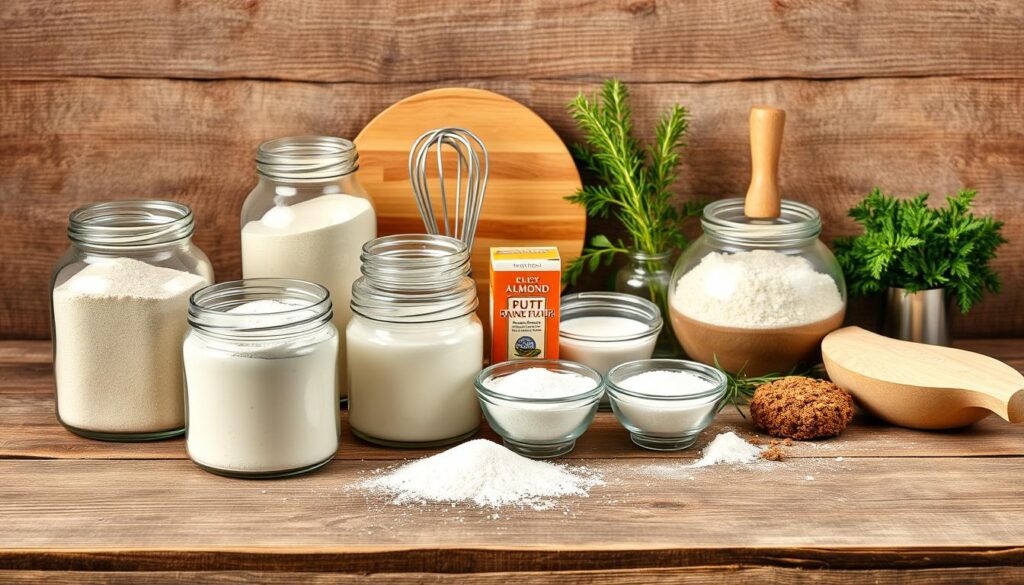
Adapting Your Favorite Recipes to Gluten-Free
Once you’re comfortable with basic gluten-free recipes, start adapting your favorite recipes. This means understanding substitution ratios and making necessary adjustments for moisture and texture.
Substitution Ratios and Guidelines
Start by using a 1:1 ratio with all-purpose gluten-free flour blends. But remember, different blends perform differently. You might need to do some experimenting.
Moisture and Texture Adjustments
Gluten-free baked goods can sometimes be denser or drier. Adjusting the liquid content and adding xanthan gum or guar gum can help improve texture. Letting batter or dough rest for a few minutes before baking also helps.
Remember, practice makes perfect in gluten-free baking. Don’t get discouraged by initial attempts. With time, you’ll find what works best for you. Happy baking!
“The discovery of a new dish does more for human happiness than the discovery of a new star.” – Jean Anthelme Brillat-Savarin
This quote captures the joy of baking and trying new recipes, including gluten-free ones. As you continue baking gluten-free, you’ll create delicious treats and help make the culinary world more inclusive.
Your Path to Gluten-Free Baking Success
Now you know the Gluten Free Baking Basics. You’re ready to start your journey. Mastering gluten-free baking takes practice. But with the right techniques and ingredients, you can make delicious treats for everyone.
To ensure Your Path to Success, remember to measure ingredients by weight, not volume. This helps you get consistent results. Also, avoid cross-contamination by using separate utensils and equipment for gluten-free baking. Try different gluten-free flours and blends to find what works best for you.
As you keep baking, you’ll find new favorite recipes and techniques. For more learning, check out the Celiac Disease Foundation and Gluten-Free Living Magazine. They have lots of info on gluten-free baking and living.
With patience and practice, you’ll become a skilled gluten-free baker. You’ll be confident in making tasty desserts and baked goods. Enjoy the process, and happy baking!

